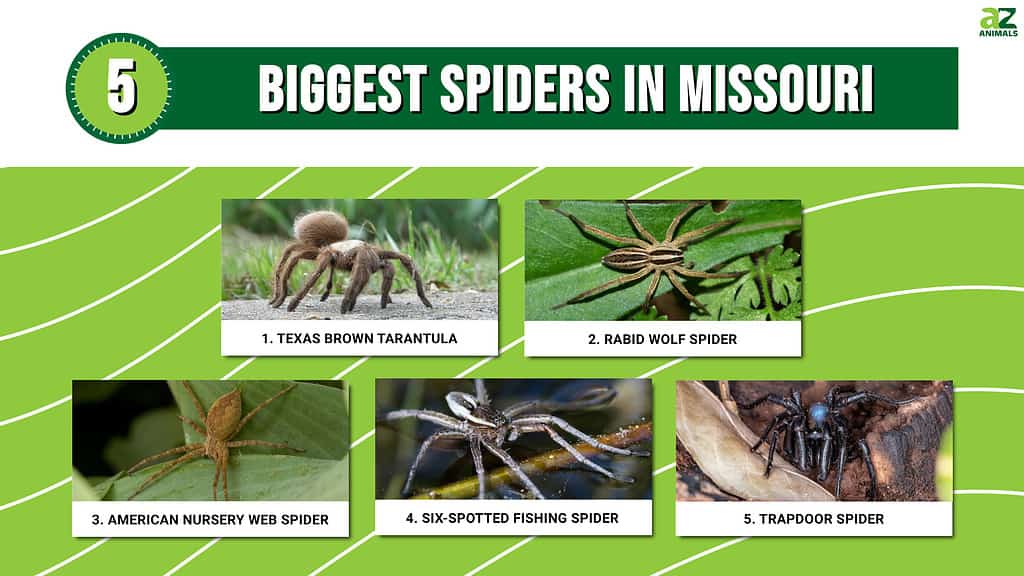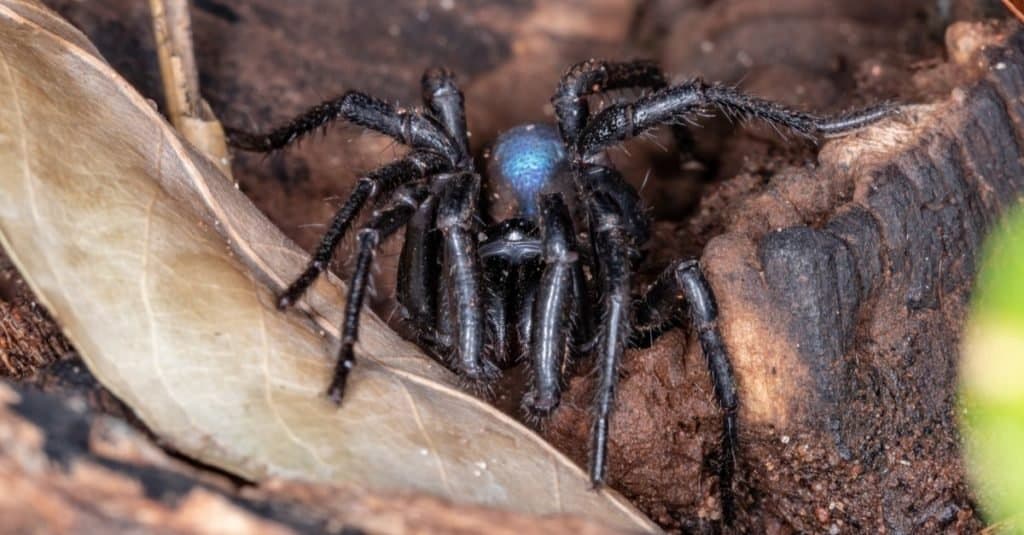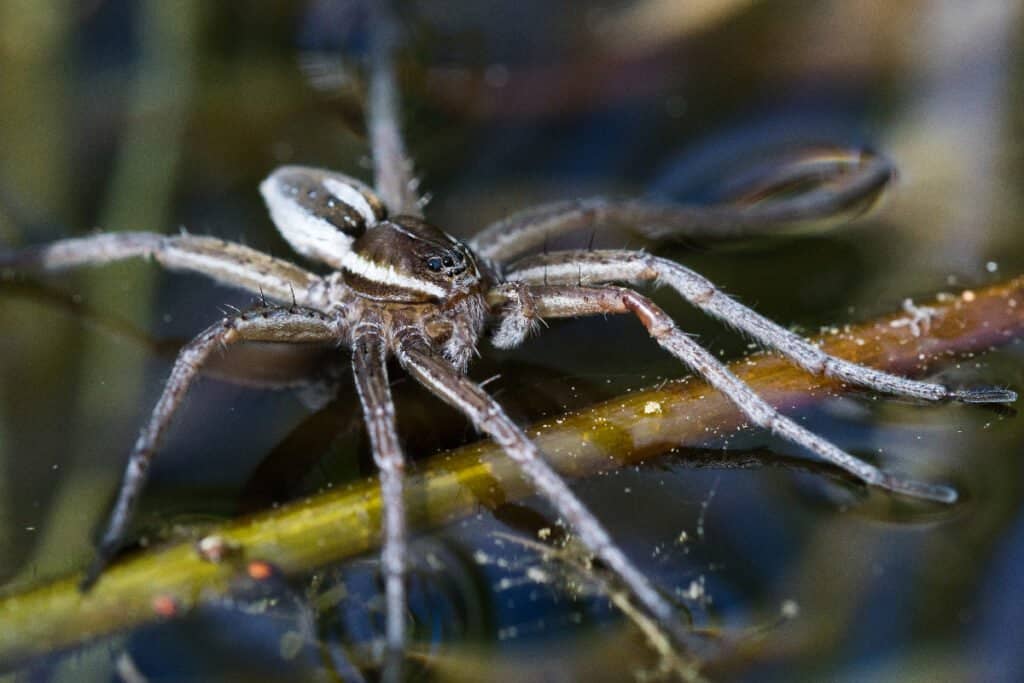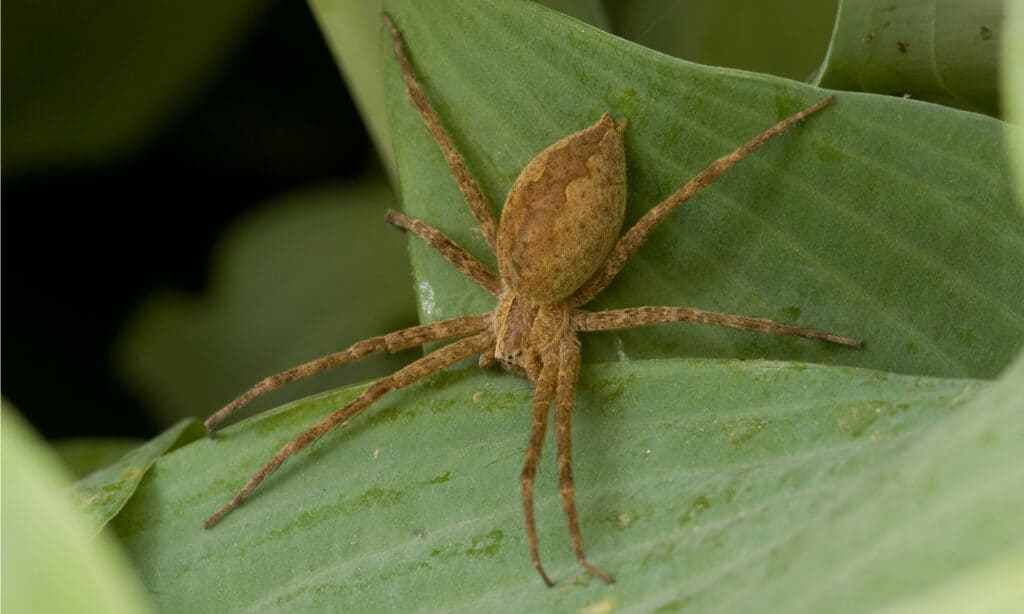Missouri is renowned for its state parks, historical locations, and tasty cuisine among other things. When most people think of the animals in Missouri, they imagine the large mammals like bison, coyotes, and the potential return of cougars. However, spiders are all around the state, and some of them are quite large and others are dangerous. Today, we’re going to focus on the biggest spiders in Missouri and the impact they can have on people. Let’s take a closer look at the largest arachnids in the state!

What Are the Biggest Spiders in Missouri?
The biggest spiders in Missouri are quite sizable, with some of them measuring almost 5 inches across when you account for their leg span. Does that mean they have the potential to cause harm to humans? Also, where do they live and what do they look like?
Don’t worry, we’re going to cover all of these elements as we closely inspect five of the largest spiders that you’ll encounter in Missouri.
5. Trapdoor Spider

Trapdoor spiders are sometimes mistaken for funnel-web spiders.
©Vinicius R. Souza/Shutterstock.com
| Scientific Name | Size | Danger to Humans |
|---|---|---|
| Ummidia Genus | 1-2 inches | Delivers a mildly painful bite |
The trapdoor spider is a very interesting creature that builds a web-lined burrow from which it strikes its foes. When it senses prey getting close, it swings open the hinged door at the entryway and grabs the creature, dragging it to its doom.
The trapdoor spider is hard to spot because it spends so much of its time in its burrow or hiding under fallen logs and rocks. This spider has a shiny black carapace and legs that look as though they had been polished. Their abdomens are dull brown, though.
Aside from their size, these spiders resemble a tarantula, but they’re not as big and their bites aren’t as severe. These spiders can deliver a mildly painful bite, but that’s about the extent of their ability to hurt people.
4. Six-Spotted Fishing Spider

The six-spotted fishing spider can catch fish more than five times its own size.
©Jukka Jantunen/Shutterstock.com
| Scientific Name | Size | Danger to Humans |
|---|---|---|
| Dolomedes triton | 0.35-2.4 inches | Bites will induce swelling and some pain similar to a bee sting. |
The six-spotted fishing spider is often seen near water where it hunts its prey. This unique creature can walk across water and dive below its surface to get away from predators or pull small fish from the water.
This spider is interesting because it has a brown or dark brown body with a light marking on the edges of its carapace that extends to its abdomen. The color of that marking can change from cream to almost pure white on the abdomen. It has several white spots on the abdomen, too.
That is not where it gets its name from, though. Instead, it has six dark spots on the ventral side of the abdomen, but a person rarely gets to see that side in the wild. After all, this spider is skittish and doesn’t like human interaction.
A bite from this spider has been compared to a bee sting, meaning that it is moderately painful and may swell.
3. American Nursery Web Spider

Nursery web spiders are known for eating their mates and being wonderful parents.
©SDeming/Shutterstock.com
| Scientific Name | Size | Danger to Humans |
|---|---|---|
| Pisaurina mira | 1-3 inches | Delivers a bite that is mostly harmless to humans, with pain and swelling common |
The American nursery web spider is brown or reddish brown in color and has a brown stripe running the length of the dorsal part of its carapace and abdomen. This stripe may be outlined in a light cream or white color, and the interior of the brown stripe may have a darker section.
These spiders prefer to live in tall vegetation like trees, bushes, and tall grass, so that brings them near homes in some cases. While rare, they can bite humans. Sometimes, their bites barely register with the victim, but other times they are mildly painful and swell a little bit.
This spider is very interesting because of its mating behavior where it attempts to eat the male following copulation. Sometimes, the male uses a web to tie the female’s legs together to prevent an attack! Also, these spiders build a nice nursery out of their web for their hatchlings to keep them safe after they hatch.
2. Rabid Wolf Spider

Rabid wolf spiders are harmless to humans but larger specimens can give a painful bite.
©Brett Hondow/Shutterstock.com
| Scientific Name | Size | Danger to Humans |
|---|---|---|
| Rabidosa rabida | 1-3 inches | The bite may cause some pain and swelling, it but is not otherwise harmful to humans. |
Despite the name, the rabid wolf spider is not overtly aggressive or dangerous to humans. Yet, it is among the biggest spiders in Missouri even though it’s smaller than its cousin from the Carolinas.
Like many other wolf spiders, they have a light brown body with two dark stripes on the carapace and three sections of light coloring. One is a stripe behind the eyes, and two others surround the outside of the dark markings.
The abdomen is different, with one large brown stripe running down the middle that is surrounded by light brown or cream coloring on both sides. This spider chases down its prey rather than using webs. These creatures can bite, and such attacks usually result in some pain and swelling in the area.
Some people are allergic to their venom, and they may need medical intervention for nausea, headaches, dizziness, and other symptoms. Such effects are very rare from these spiders, though.
1. Texas Brown Tarantula

The Texas brown tarantula can grow to more than four inches long.
©texas brown tarantula/Shutterstock.com
| Scientific Name | Size | Danger to Humans |
|---|---|---|
| Aphonopelma hentzi | 2-4.5 inches | Delivers a painful bite that leaves puncture wounds, swelling, and possible infection |
The Texas brown tarantula is the biggest spider in Missouri with a total length that exceeds four inches and may approach closer to five in rare cases. This is the only tarantula in Missouri, and it’s often called the Missouri tarantula or the Oklahoma tarantula in addition to the Texas brown tarantula. They’re all Aphonopelma hentzi, though.
This spider delivers a painful bite, probably the most painful on this list. It has large fangs that leave puncture wounds that will swell, itch, and may become infected. This spider does not deliver a fatal bite, though.
Texas brown tarantulas weigh up to three ounces, making them rather heavy for a spider. They usually have a brown or sandy carapace and a dark brown abdomen, with plenty of hair covering their abdomens and legs. You’ll find them in grassy fields where they can find cover below fallen trees and stones. You definitely don’t want to stick your hand anywhere you can’t see with these around.
Now that we’ve identified the biggest spiders in Missouri and seen that they’re relatively harmless, it’s time to talk about the most dangerous spiders. In this state, you need to avoid the black widow and brown recluse, both of which can be found in the state.
They deliver painful, medically significant bites that need the immediate attention of medical professionals. Aside from those two spiders, you should be relatively safe from the dire effects of arachnid bites in the state.
Summary of the 5 Biggest Spiders in Missouri
Here’s a recap of the five largest spider species found in Missouri that we took a look at.
| Rank | Spider | Size |
|---|---|---|
| 1 | Texas Brown Tarantula | 2-4.5 inches |
| 2 | Rabid Wolf Spider | 1-3 inches |
| 3 | American Nursery Web Spider | 1-3 inches |
| 4 | Six-Spotted Fishing Spider | 0.35-2.4 inches |
| 5 | Trapdoor Spider | 1-2 inches |
The photo featured at the top of this post is © texas brown tarantula/Shutterstock.com
Sources
- Missouri Department of Conservation, Available here: https://mdc.mo.gov/discover-nature/field-guide/texas-brown-tarantula#:~:text=The%20Texas%20brown%20tarantula%20is,reddish%20hairs%20on%20the%20carapace
- Missouri Department of Conservation, Available here: https://mdc.mo.gov/discover-nature/field-guide/spotted-fishing-spider#:~:text=The%20spotted%20fishing%20spider%20lives,and%20sometimes%20also%20the%20abdomen
- Missouri Department of Conservation, Available here: https://mdc.mo.gov/magazines/conservationist/2020-10/hidden-architects
- University of Wisconsin (1970) uwm.edu/field-station/6-spotted-fishing-spider/
- Healthline (1970) healthline.com/health/wolf-spider-bite#symptoms
Thank you for reading! Have some feedback for us? Contact the AZ Animals editorial team.






